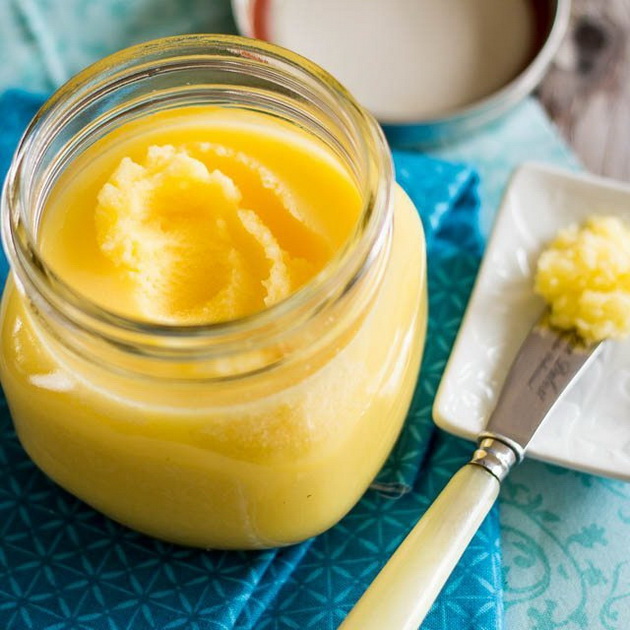

Once you get the solidified mixture, squeeze the butter and put it in another bowl.The ice cubes react with this mixture to solidify the ghee and this in turn makes the fresh butter, which looks just like you get in the stores. You can also use your hands to make the butter. Afterwards, add 6-7 ice cubes to this bowl and stir the ghee using a spoon. Next, add fruit salt/baking soda to the ghee. Add a pinch of salt to this melted ghee with a pinch of turmeric. Once the ghee is melted, transfer it to another clean bowl.It takes 2-3 minutes to completely melt the ghee. The ghee needs to be in liquid form and make sure that you do not put it over the gas. Take 1 cup of ghee in a bowl and put this bowl in the centre of this hot water. To make this butter, take a large bowl and pour 2-3 cups of hot water into it.Just be warned: ghee's unmistakable taste is hard to quit. Ghee can be used like any other cooking fat, but using it as a finishing oil really allows that rich, grassy flavor to come through. Rub down a batch of vegetables before roasting, use a dollop to sautée garlic and ginger, or drop a spoonful into hot drinks like chaider for a mid-morning energy boost. Ghee cooks without much splatter or burning, making it ideal for high-heat cooking. You can find ghee at Indian grocery stores, Whole Foods, and online. Whatever brand you buy, know that grass-fed milk will produce the most fragrant and delicious-tasting product. BA senior food editor Claire Saffitz is devoted to Ancient Organics, writing, “this stuff is so fragrant and flavorful that I went through about a third of the jar in a week.” Other brands we love include Pure Indian Foods, Tin Star Foods, and Deep Pure Cow Ghee. If you’re reluctant to go down the DIY route, there are also many excellent ghee products available for purchase. (If you start to detect an off flavor, scrape off the top level, and store it in the fridge instead.) Just be sure to keep the jar away from steaming stoves, food, and anything else that can introduce bacteria. The absence of water even makes ghee shelf-stable, meaning it can be stored without any refrigeration for extended periods of time. The clarifying process also removes casein and lactose, making ghee suitable for the dairy-sensitive. Why we love it:Ĭlarifying butter by removing water creates a higher smoke point-about 465º F compared to butter’s 350º F. It even appears in the Vedic myth of creation, when the deity Prajapati created ghee from nothingness and poured it into the fire to form his offspring. Ghee has played a key role in Ayurveda for centuries, where it's prized for its anti-inflammatory, digestive, and therapeutic properties. It is shelf-stable, with a high smoke point and deeply nutty flavor. In comparison, ghee is cooked over low heat until the milk solids have a chance to start to brown lightly, creating a slightly nutty, caramelized vibe. In France, clarified butter has uncooked milk solids, yielding a product with a very clean, sweet flavor.

butter that has been simmered and strained to remove all water. It's a lot to love, but what exactly is ghee, and what’s the best way to maximize its goodness? Read on. And the distinctly flavored fat has deep roots in well-established Ayurvedic practices. It's also shelf-stable and has a generously high smoke-point, making it pretty much the ideal cooking oil. It’s unbelievably delicious, like ultra-rich French butter ( aka the good stuff), that's been gently caramelized and transformed into a smooth spread. Click here to read the whole guide-then stock up. This story is part of the Healthyish Pantry, a collection of articles breaking down the ingredients we love most.


 0 kommentar(er)
0 kommentar(er)
